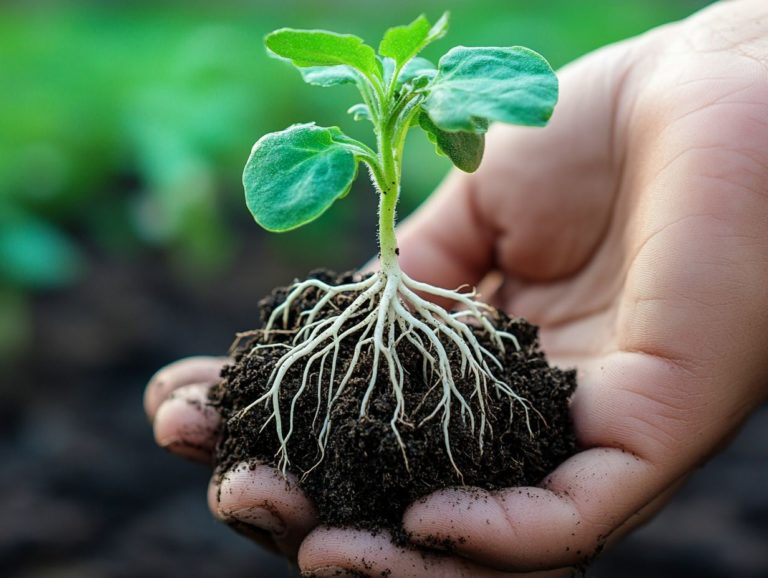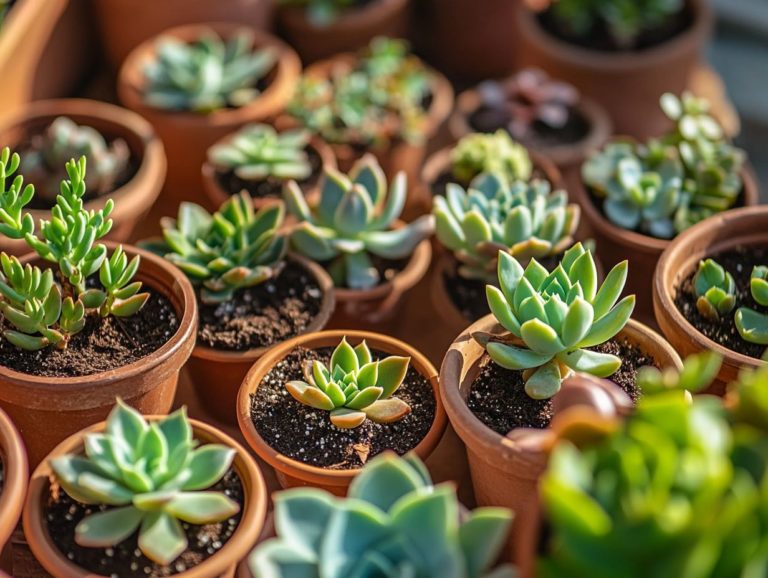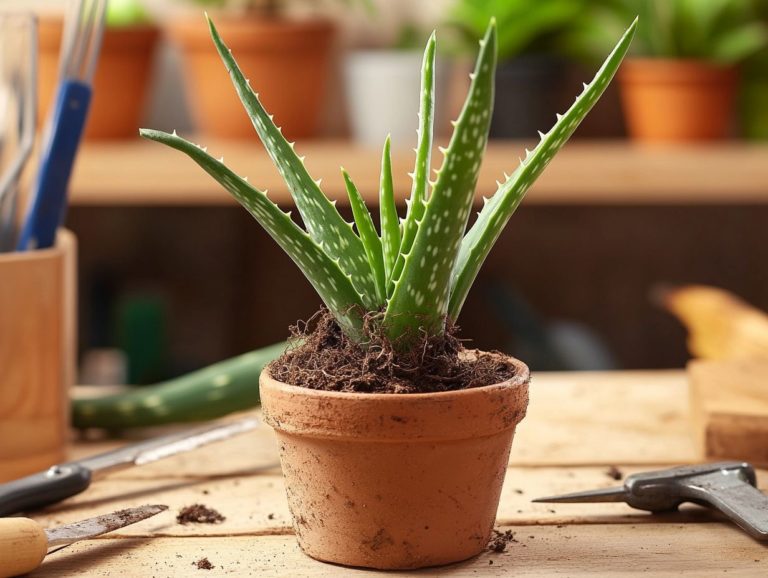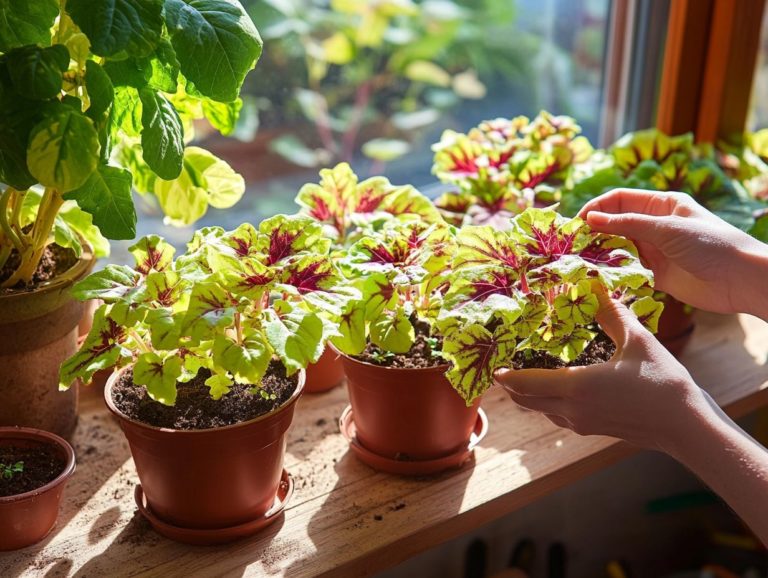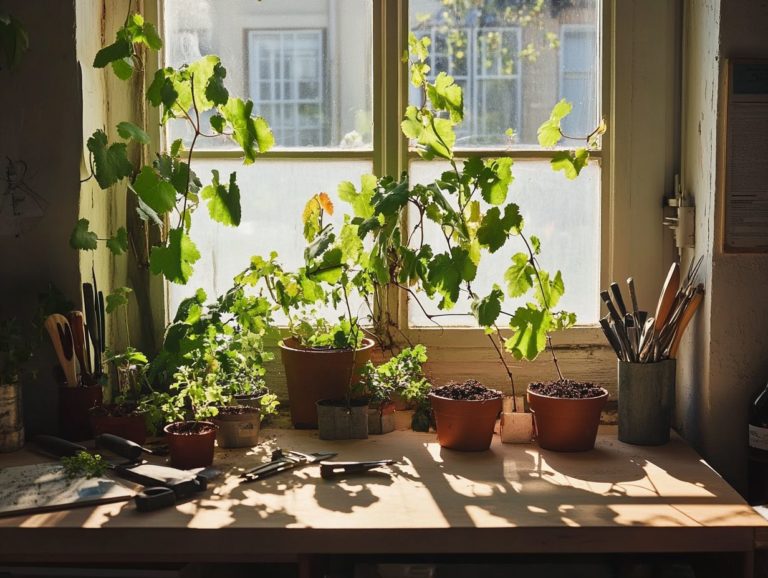Easy Steps to Propagate Cacti Indoors
Cacti are not merely resilient plants; they also offer a rewarding hobby for those who embrace indoor gardening. Cultivating various types of cactus plants and succulents can be enjoyable and fulfilling.
Propagating cacti is an excellent way for you to expand your collection of cactus cuttings and succulents without breaking the bank. Get ready to dive into the exciting world of cactus propagation!
This guide will walk you through the essentials of cactus propagation. You’ll learn what it involves, the advantages of doing it indoors, and the materials you’ll need for successful methods.
You’ll find an easy step-by-step process for taking cuttings, troubleshooting tips for common issues, and advice to ensure your propagation journey is successful.
Whether you’re a seasoned succulent enthusiast or simply curious to dip your toes into this green adventure, there’s something here for everyone eager to cultivate these fascinating plants, including prickly pears and the Peruvian Apple Cactus.
Contents
- Key Takeaways:
- Understanding Cacti Propagation
- Why Propagate Cacti Indoors?
- Materials Needed for Indoor Propagation
- Step-by-Step Guide to Propagating Cacti Indoors
- Troubleshooting Common Issues
- Tips for Successful Cactus Propagation
- Frequently Asked Questions about Cactus and Succulents
- What materials do I need to propagate cacti indoors?
- How do I choose a healthy cactus plant for propagation?
- What is the best time of year to propagate cacti indoors?
- Can I use regular potting soil to propagate cacti indoors?
- How long does it take for a propagated cactus to root?
- Do I need to water my propagated cactus differently than a mature cactus?
Key Takeaways:

Here are some key points to keep in mind as you start your propagation journey!
- Understanding the basics of cactus propagation is essential for successful indoor growth, especially when considering methods like stem cuttings and leaf cuttings.
- Indoor propagation provides many benefits, such as control over growing conditions and the ability to expand your cactus collection with healthy selections.
- With the right tools and techniques, including cactus compost and free-draining pots, propagating cacti indoors can be simple and rewarding.
Understanding Cacti Propagation
Understanding cacti propagation is vital for you as a gardener or plant enthusiast aiming to nurture vibrant cactus plants. This process involves growing new plants from the ones you already cherish, which can include methods like stem cuttings, leaf cuttings, and taking cuttings from healthy mature plants.
Cacti like the Peruvian Apple Cactus, Prickly Pears, and Monstrose Cactus are relatively easy to propagate, especially when you use the right techniques and materials. This guide on how to propagate succulents successfully will explore the propagation methods in detail, highlighting the importance of cactus compost, the use of free-draining soil, and the crucial role of indirect sunlight for successful growth.
What is Propagation?
Propagation is the process of growing new plants from existing ones a fundamental practice for gardeners eager to expand their collection of cacti and succulents, including various Agaves and Aloes. This technique allows you to multiply your favorites and also plays a crucial role in maintaining and rejuvenating the health of your plants.
There are various methods for propagation, including the use of offsets and bulbils, each offering unique advantages. For instance, stem cuttings are a popular choice because they can root quickly when given the right conditions, especially with effective watering techniques. Likewise, leaf cuttings provide another effective avenue, particularly for specific succulent varieties where a single leaf can regenerate into new roots and shoots. If you’re interested in a popular succulent, check out this guide on how to propagate aloe vera at home to enhance your success.
By understanding how cutting roots contribute to the growth of your plants, you ensure that these new specimens thrive, enhancing your gardening experience whether you’re just starting or have been cultivating your green thumb for years.
Why Propagate Cacti Indoors?
Cultivating cacti indoors presents a wealth of benefits for both novice and seasoned gardeners, particularly when practicing environmentally friendly methods.
You gain enhanced control over your environment by managing factors such as temperature, humidity, and light exposure elements crucial for the thriving growth of your cactus and succulent cuttings.
Start your cactus propagation adventure today!
Benefits of Indoor Propagation
Indoor propagation of cacti brings many advantages. You can grow healthy plants in a controlled space with free-draining soil and just the right amount of indirect sunlight.
This method helps you keep humidity levels ideal. It significantly reduces the risk of pests and diseases that often affect outdoor plants, especially types like Cereus and Echinopsis.
Indoor propagation eliminates the unpredictability of outdoor weather. You can set consistent watering schedules and control temperatures, leading to healthier and more vigorous plants.
It also lets you experiment with various cactus species, like Mammillaria and Thimble Cactus. To enhance your indoor gardening experience, you can also explore how to propagate herbs indoors. Enjoy expanding your collection in a stress-free environment.
Materials Needed for Indoor Propagation
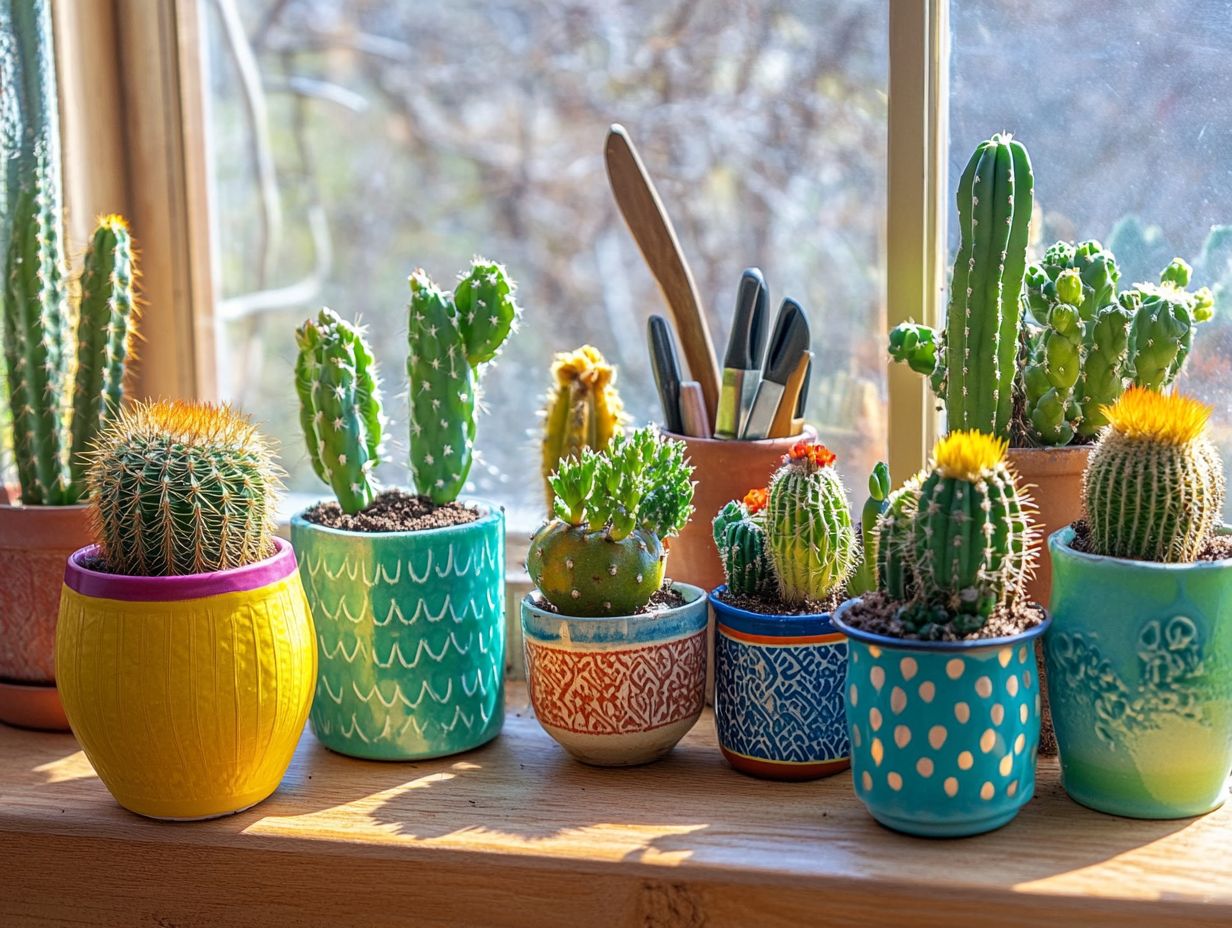
Don t wait! Gather the right materials for successful indoor propagation. This helps create an environment where your cactus and succulent cuttings can thrive.
Essential Tools and Supplies
You will need sharp cutting tools, pots with drainage, and cactus compost for indoor propagation. These items support the proper planting depth for various cactus species.
Investing in high-quality cutting tools ensures clean cuts on cactus stems. Clean cuts lead to healthier propagation and growth.
Choose pots with drainage holes to prevent water buildup. Cacti need well-draining environments to avoid rot, so proper watering is crucial.
The right cactus compost is lightweight and allows air to reach roots while retaining minimal moisture. This creates a nurturing environment for your indoor plants.
Step-by-Step Guide to Propagating Cacti Indoors
A good step-by-step guide can boost your chances of success. Follow these instructions to give each cutting the optimal conditions it needs to thrive.
Preparing the Cuttings
Preparing your cuttings is an important step. Selecting a healthy segment from a thriving cactus is crucial for success.
Carefully inspect the parent plant for healthy segments. Look for vibrant colors and ensure there are no pests or diseases.
Use a sharp, sterile knife to make clean cuts. Clean cuts help prevent infection and promote faster healing of your cactus cuttings.
Make sure each cutting has a couple of small bumps, called nodes. These are essential for root development.
After cutting, let the pieces rest in a dry, shaded area for a few days. This helps prevent rot during the initial growth phase.
Planting and Caring for Cuttings
Caring for your cuttings requires attention to detail. They should be planted in cactus compost and receive indirect sunlight for healthy growth.
Water them generously to encourage vibrant growth. This helps them adapt to their new environment.
Selecting soil that allows water to flow through easily is crucial. Cacti thrive in dry conditions, so manage moisture carefully.
Plant cuttings at a depth of one to two inches for stability. This ensures they develop strong roots without being buried too deeply.
Provide bright but indirect sunlight to nurture growth. This protects your cactus cuttings from sunburn.
Let the soil dry completely between waterings to enhance plant health. This practice helps your cacti and succulents thrive.
Troubleshooting Common Issues
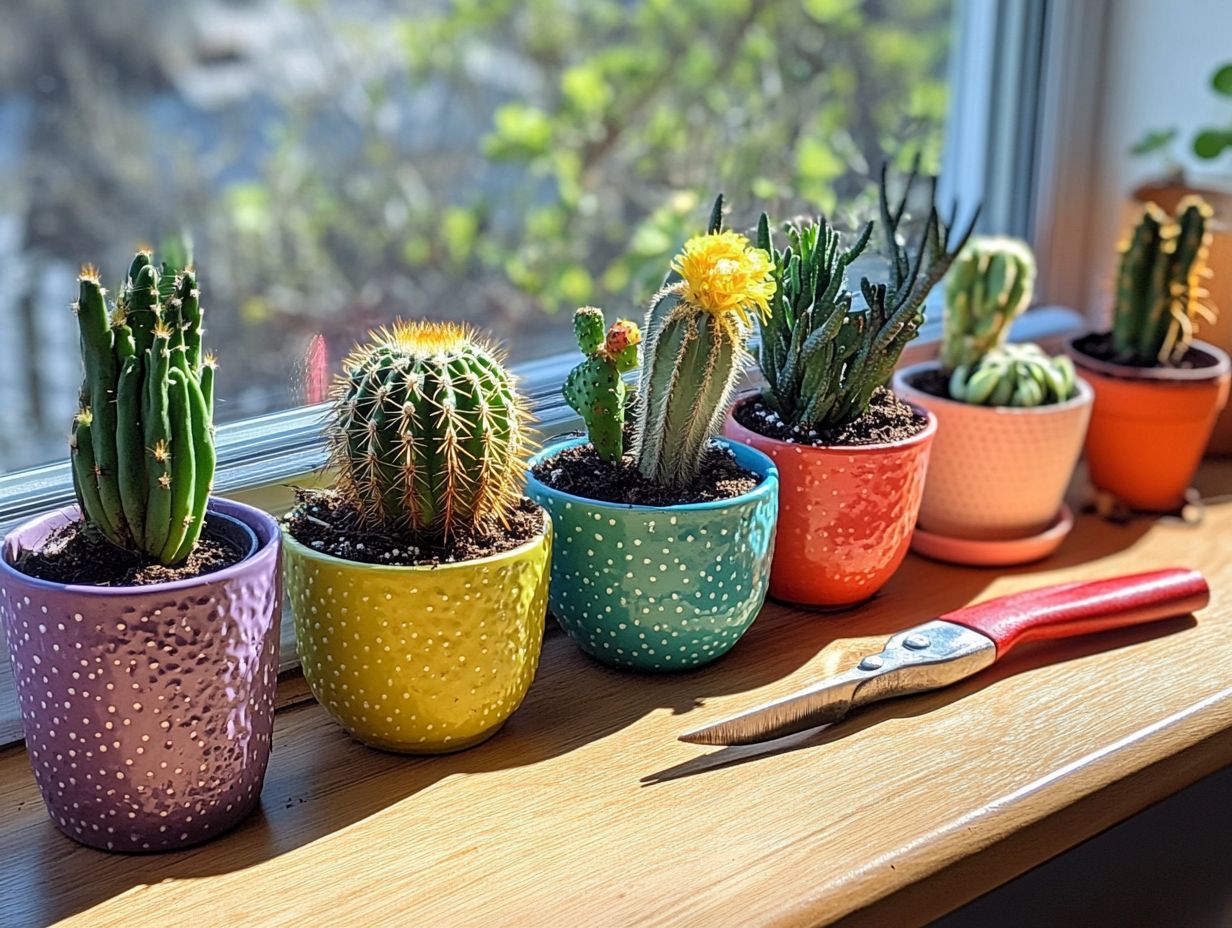
Troubleshooting common issues is essential for indoor gardeners. Identifying pests and diseases protects your cactus cuttings and other plants.
By mastering this skill, you keep your plants healthy and vibrant. Effective cactus care techniques are key to their success.
Dealing with Pests and Diseases
Stay vigilant against pests and diseases that threaten your indoor cacti. Understanding potential threats helps maintain their health.
Pests like mealybugs and spider mites can harm your cacti. Diseases such as root rot and fungal infections can also occur without careful management.
To protect your succulents, use well-draining soil and water carefully. Ensure good air circulation and inspect for early signs of trouble.
Tips for Successful Cactus Propagation
Implement effective tips for successful cactus propagation. These strategies can elevate your gardening experience significantly!
Practical insights ensure your efforts yield fruitful results. This applies whether you’re propagating cacti or other succulents.
Expert Advice and Recommendations
Expert advice is vital for mastering cactus care. Each healthy specimen thrives when you use effective propagation methods.
Embrace techniques like stem cuttings and seed germination to boost your success rate. Understanding individual species’ needs is crucial for optimal growth.
Use sterile tools and let wounds callous before planting. This prevents disease and promotes strong root development.
Consider adding varieties like Mammillaria or Echinopsis for diversity. With patience and attention, you can cultivate a beautiful collection of cacti.
Frequently Asked Questions about Cactus and Succulents
What materials do I need to propagate cacti indoors?
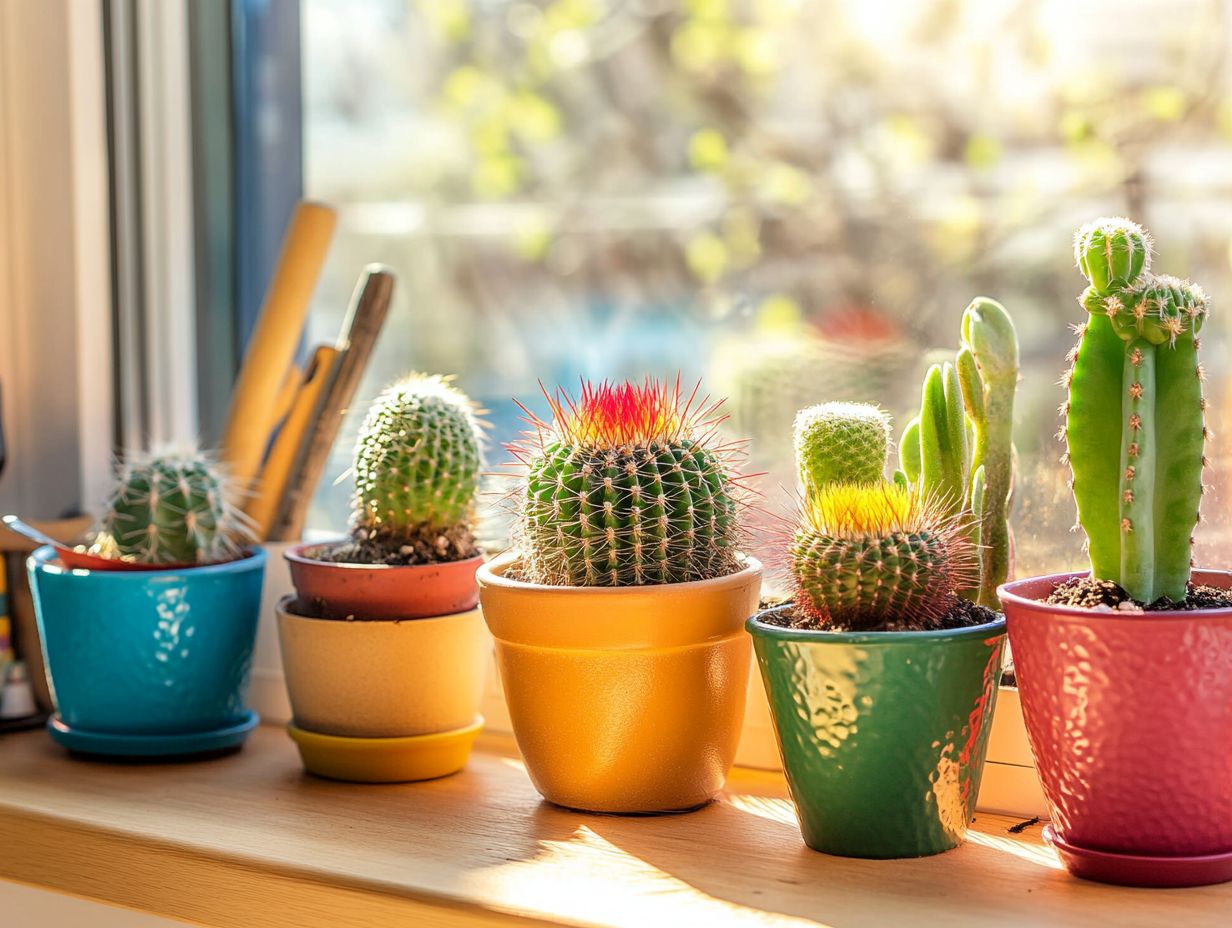
To propagate cacti indoors, gather a sharp knife or pruning shears, cactus potting soil, a small pot, and a healthy cactus plant. You might also like to include agaves or aloes for variety.
How do I choose a healthy cactus plant for propagation?
Select a cactus without signs of disease or damage. Look for one with at least three healthy segments for the best success.
What is the best time of year to propagate cacti indoors?
The ideal time to propagate cacti is during spring or summer. This is when plants are actively growing and can produce new growth effectively.
Can I use regular potting soil to propagate cacti indoors?
No, regular potting soil is too dense and retains too much moisture. Use a well-draining cactus potting mix to keep your plants healthy.
How long does it take for a propagated cactus to root?
Rooting can take a few weeks to a few months, depending on the cactus type and conditions. Be patient and check for roots regularly.
Do I need to water my propagated cactus differently than a mature cactus?
Yes, water your propagated cactus more frequently than a mature one since it is still developing its roots. Avoid overwatering to prevent root rot, especially with specific types like echinopsis and opuntia.

